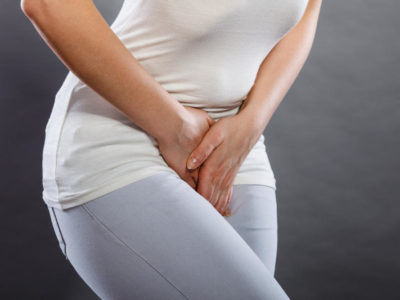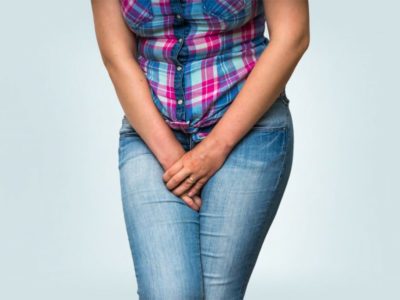Urinary Incontinence treatment specialist in Los Angeles and Glendale
“In my practice, I treat women with urinary incontinence and pelvic organ prolapse, in which pelvic organs shift out of position. My particular area of expertise is vaginal approach and minimally invasive repair of pelvic organ prolapse, and I emphasize treatments that meet each woman’s needs. I emphasise uterine-sparing techniques for women who want to avoid having their uterus removed.
In my practice, I consider each patient’s specific needs, age, lifestyle, personal preferences, cultural and religious beliefs, and treatment goals. Improved sexual function is an important goal in restoring a woman’s quality of life after pelvic organ prolapse or incontinence surgery. I coordinate care with other healthcare providers—including physical therapists, gynecologists, and colorectal specialists—to create the best approach to managing pelvic disorders.
I believe in a personal approach to medicine, and I am completely committed to providing the care, treatment, and support that each of my patients requires. I try to teach this caring approach to the students, residents, and fellows whom I have been privileged to help train as doctors.”
Urinary incontinence is defined as uncontrollable loss of urine. Urinary incontinence is not a normal consequence of aging and childbirth and with early evaluation and appropriate treatment in most cases can be treated and controlled. Continence is maintained by a combination of structural, muscular, and nervous system coordination that if disrupted can lead to urinary incontinence.
It was not long ago that any woman who complained of urinary incontinence would be taken to the operating room for a variety of surgical treatments including an anterior and posterior repair to abdominal operations that were less than effective with significant short-term and long-term complications. At last count, 135 procedures for urinary incontinence have been recorded. Over the past 25 years, significant advances in diagnosis and treatment of urinary incontinence have been made. Our goal with each patient is to identify the etiology of urinary incontinence and design a treatment plan that meets her continence profile.
Most Common Types of Urinary Incontinence
THESE FOLLOWING CONDITIONS CAN OCCUR TOGETHER IN THE SAME INDIVIDUAL AND SYMPTOMS MAY NOT DIRECTLY POINT TO THE CONDITION CAUSING A PATIENT’S INCONTINENCE.
Stress Incontinence
Stress incontinence loss of urine on exertion or when pressure is exerted on the bladder, ie: coughing, laughing, sneezing, exercise, jumping, In this condition the urethra and the pelvic floor muscles are unable to prevent the urine from escaping, either due to one or a combination of structural, muscular, or nervous system injuries.
Urge Incontinence
Urge incontinence is loss of urine subsequent to a sudden urge to urinate. This condition is usually as a result of bladder muscle contractions overcoming the resistance from the urethra and loss of urine. Neurological and medical issues are normally the most common reason for this type of disorder.
Overflow Incontinence
Overflow incontinence is a bladder condition were the bladder does not being able to empty and loss of urine occurs as a result of overflow. This usually is a problem of bladder muscle weakness, nervous system damage, or obstruction of the urinary outflow due to surgery, tumor, or stone.
Overactive Bladder
Overactive bladder presents with symptoms of urinary urgency and frequency, sensation of incomplete bladder emptying, and multiple night time voids. These symptoms usually represent bladder muscle irritability and could be as a result of nervous system problems, kidney stones, bladder cancer, and many of other possible etiologies.
Evaluation of Urinary Incontinence
The evaluation process for urinary incontinence can be quick and simple or complex requiring multiple diagnostic modalities. Evaluation begins by a detailed history and physical covering the present symptoms and duration, medical and surgical history, and obstetric history as well as a detailed Gynecological and urological examination.
A urinalysis is helpful to rule out infection, kidney stones, or risk of kidney disease or cancer.
Ultrasound of the kidney and bladder, as well as gynecological organs, allows identification of tumors and growths that may be responsible for the incontinence.
A cystoscope is a specially designed instrument for evaluation of the bladder. We use small cystoscopes designed for evaluation of a woman’s body. These instruments are delicate minimizing the discomfort and allow maximal diagnostic ability.
Urodynamic testing is a functional study of the bladder and the urethra identifying weakness in the system interaction during voiding or storage of urine.
CT urogram and MRI allows identification of the kidney and bladder lesions and spinal defects.
Treatment Options for Female Urinary Incontinence
Treatment options include physical therapy, medication, natural remedies, fluid and diet alterations, weight management, urethral bulking injections, and vaginal surgical repairs.
These treatment options can be very successful when targeted at the correct cause of incontinence.
Is female urinary incontinence a normal part of life?
While most women who experience urinary incontinence might think it’s a normal part of life due to either age or pregnancy, urinary incontinence is a medical condition that can be experienced by women of all ages and can be treated and controlled. Urinary incontinence is usually a symptom of something else that a urogynecologist can diagnose and treat.
What is the cause of urinary incontinence?
Urinary incontinence is generally caused by problems with nerves, muscles and supportive structures that control urine flow. These can be weakened or affected by age, menopause, weight gain, childbirth, pregnancy, prior surgeries, other medical problems, chronic constipation. Infections and medications can also cause incontinence temporarily until they are treated or changed.
Does pregnancy cause urinary incontinence?
About 40% of pregnant women develop urinary incontinence. This is caused by the pressure from the growing uterus and baby on the pelvic organs and damage from stretching and tearing that occurs during labor. Most women after delivery complain of some degree of urinary incontinence which improves as in the first three months only to return later in life.
How is female urinary incontinence diagnosed?
A licensed medical professional such as an OB/GYN specialist or a urogynecologist who has specialized training of the female urinary system will analyze your medical history and symptoms in addition to a physical exam and tests such as Ultrasound, urine test, bladder stress test, cystoscopy or a bladder stress test. After careful analysis, they will provide you with the diagnosis and treatment options.
When should I seek treatment?
As with any other condition, it is advisable to seek treatment early, as urinary incontinence has a much greater success rate with conservative treatment. Some of the most common symptoms of women with urinary incontinence include loss of urine with laugh, sneeze, cough or exercise; going to the bathroom multiple times at night to urinate, urinary frequency and urgency and loss of urine with urge sensation, and if you wear pads for urine leakage absorption.
How is urinary incontinence treated?
The type of treatment for urinary Incontinence is usually dependent on the specific area of damage and weakness. Conservative management in early stages have good results and medication and surgery may be necessary at later stages. Treatment options a urogynecologist might consider include weight management, changes to your diet and fluid intake, pelvic floor exercises, urethral bulking injections, medications, surgery or physical therapy. Treatment is very successful and can significantly improve a woman’s quality of life.
Is surgical treatment and recovery difficult?
There have been significant advances in surgical treatment for urinary incontinence. The operations are usually performed in an outpatient setting through minimally invasive techniques.
Recovery is also quick. Most women are able to return to normal activity within 1 week and 6 weeks for full healing.
What preventive measures can I take?
Pelvic floor exercises are very helpful in strengthening the supportive structures in the pelvis. Make sure you are doing them correctly and ask your physician to show how it’s done properly.
Avoid chronic constipation, coughing, and straining. Chronic pressure on the pelvic organs worsens the already weakened pelvis after a vaginal delivery.
Avoid excessive weight gain, medications, and treat vaginal and urinary tract infections early.
Vaginal dryness after menopause may cause urethral irritability. Consider treating vaginal dryness with local use of estrogen or laser therapy.
Address any prolapse and urinary incontinence symptoms early. Early treatment is usually the most successful.



